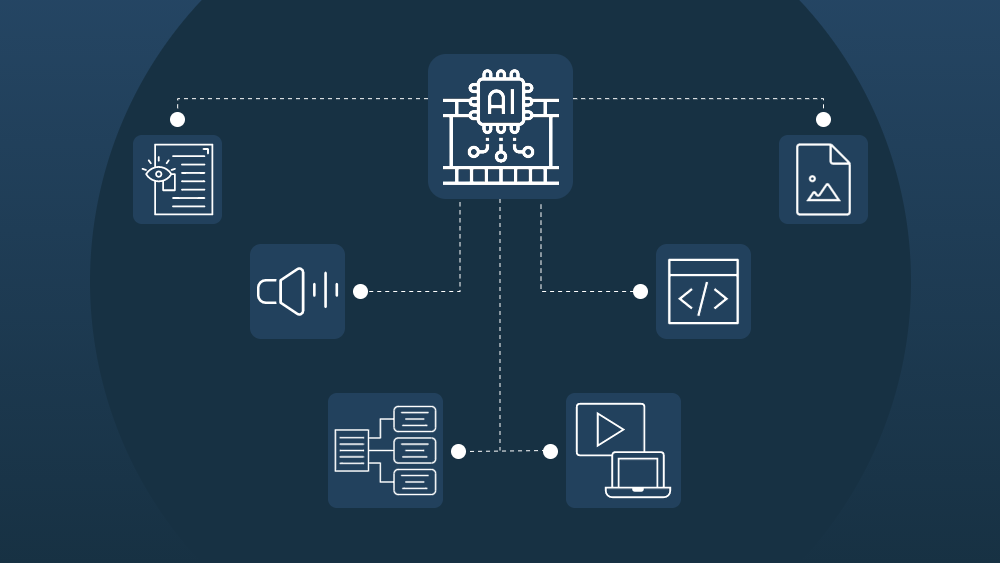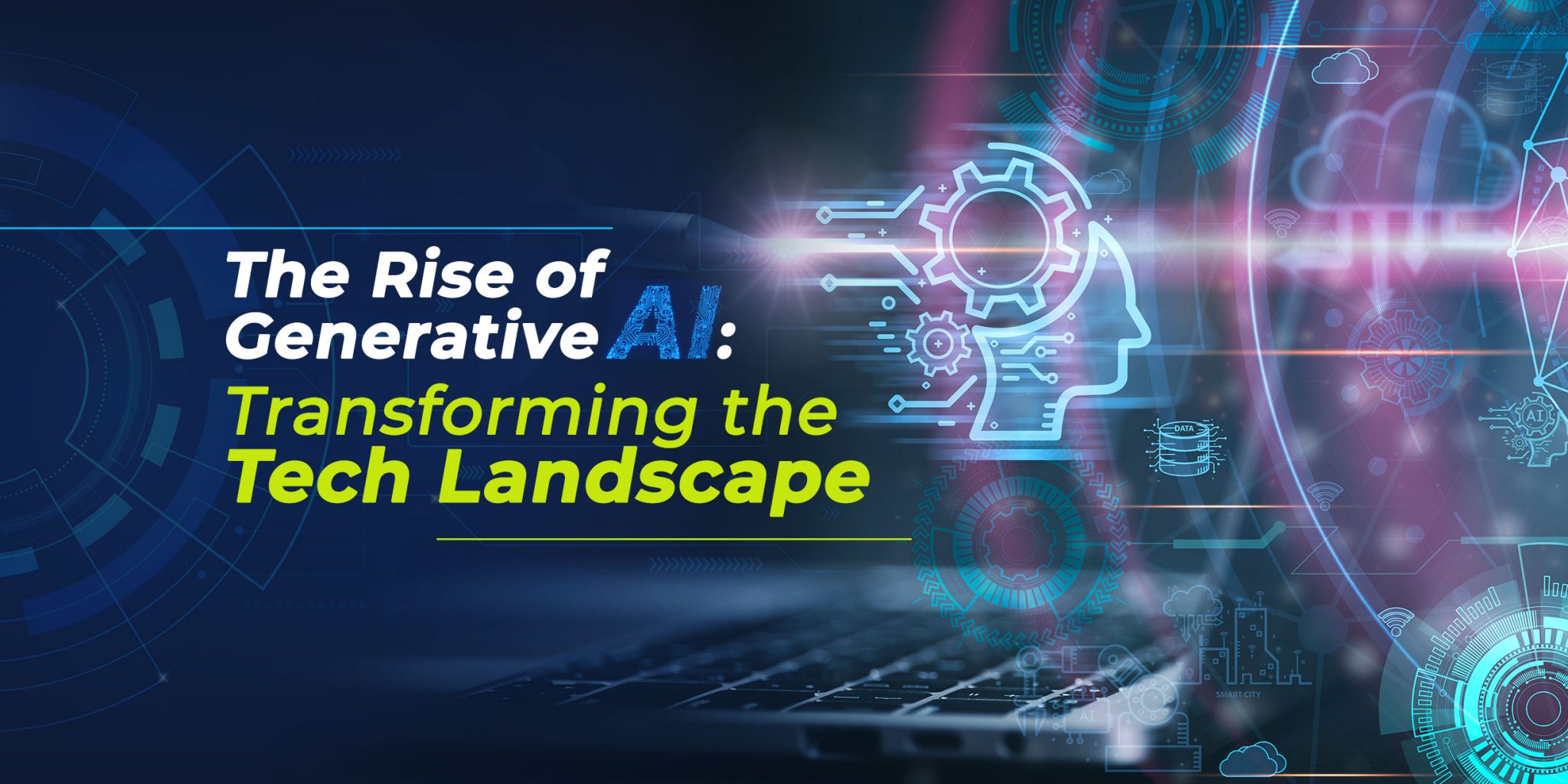The Rise of Generative AI: Transforming Industries and Daily Life
Generative AI is Revolutionizing Technology and Creative Industry GPT-3 is a state-of-the-art model that uses one of these new technologies. It has been trained to generate text at an outstanding level, but can also produce images, music, or even videos. Because it is turning out a very powerful source of art, promotional strategy for businesses or researchers, etc. Today, we will be taking a closer look at what generative AI is, how it works, and the applications of this technology across different industries.

What is Generative AI?
There are numerous types of IT devices and AI, for example. one: where “Generative” starts with content to be trained on, content should not be perfect surrounding images_texts_, etc., but the device self does imagination space underneath that input concept. Machine learning algorithms are used to analyze available data. So, it generates new data similar to the original. For instance, a generative AI that has learned from thousands of images can make new unheard-of, unique imagery.

How Does Generative AI Work?
Machine Learning
Generative AI is based on machine learning. This is being done by training algorithms on huge datasets. Those algorithms will start learning patterns & features from the data. Once trained, they can then produce new data that looks like the old one.
Neural Networks
Generative AI and neural networks are modeled after the human brain. Fig 3: Deep Learning is a subset of Machine learning that uses neural networks having multiple layers Bigger Picture Thus, these are very powerful forces of deep neural networks able to recognize patterns and generate new data.
GANs – Generative Adversarial Nets
One of the most common generative AI is Generative Adversarial Networks or GANs. There are two neural networks in GANs: a generator and a discriminator. The generator generates new data and the discriminating judges it. The two networks collaborate to increase the quality of data generated. The generator learns how to write a real-like corpus over time.
Applications of Generative AI
Art and Design
Art & Design Generative AI revolutionizes art and design It is used by artists of various disciplines to create new works from paintings to sculptures. Designers use this to create a specific pattern or print. AI Art across galleries and online arenas
Writing and Content Creation
Added by Generative AI Generative AI Writing Articles, Stories & Poems. It also helps writers create ideas and to get final drafts of the copy. AI creates marketing content and social media posts for businesses Faster and Easier content development, as the AI tools will generate text similar to humans.
Music and Audio
Generative AI by Musicians Artificial intelligence can generate melodies, harmonies, and rhythms. It also can create the sounds for videos and games, sound effects, or patterns. Music AI is opening doors for composers and producers as well.
Gaming
Generative AI is used to generate game content in the gaming industry. It generates terrains, characters, and plots. for more exciting gameplay. AI for unique player experience by developers.
Healthcare
Other Applications of Generative AI in Healthcare Provide ways to generate synthetic medical data for research. It helps in training medical AI systems without violating patient privacy. The AI was also able to synthetically generate medical images such as for diagnostic or treatment planning.
Fashion
Generative AI has made its way into the fashion industry. AI is used by designers to design new clothing and accessories. Artificial intelligence can understand fashion trends and recommend new styles. That way, brands can keep upcycled in a fierce market.
Generative AI for Business
OpenAI
OpenAI is one of the pioneers in generative Artificial intelligence. Their models GPT models (Generative Pre-trained Transformer) are in use all over the world The most recent version, GPT-4 is capable of producing better text than ever! OpenAI is pushing the envelope of research on what AI can do.
Generative AI is, needless to say, something Google has a hand at. DeepMind is the AI research arm of Google. Google AI (Natural Language Processing / Generation)
NVIDIA
Express Not that it is only the NVIDIA GPUs that are intensive to train a variety of AI models. They are also making AI tools for creating pictures and videos. It is an app called GauGAN, and NVIDIA lets you build lifelike maps from minimal photos.
Adobe
Those apps will have generative AI built inside, courtesy of the smart cookies that work at Adobe. Adobe Sensei, for example, is a great tool that allows users to create and edit content. The AI in Photoshop and Illustrator Saves Time in Design Development.
Key challenges and ethical considerations
Quality and Accuracy
The validation of AI-generated content quality and its correctness remains challenging Output of the AI model can be incorrect. Sustaining higher standards requires result feedback and iterative improvement.
Bias
Biases from the date on which an AI is trained can seep into its model. This understandably leads to content that is, at best, based on bias and subjectivity from the beginning or worse – entirely unfair. Imperfect input data Scientists must use representative sample sizes that include many examples of each possible class Developers should then try to acquire as wide and varied test datasets. Immutable but not flawless Input dataScientists require a diverse, large dataset containing ample samples from all possible classes being represented in the model. It is imperative that bias has to be tackled in AI for fairness and inclusivity.
Copyright and Ownership
Generative AI poses Questions of copyright and ownership. Who has a copyright to the content generated by AI? Creator Compensation Those are very valid concerns that need to be addressed legally and ethically.
Misuse
Generative AI is in danger of becoming a weapon. Such content can be used to generate fake news, deepfakes, and much more. There needs to be a way of making sure that such technology cannot become misused, which means there have got to be safeguards and regulations. The public also must be educated about such AI-generated content.
The Future of Generative AI
More Advanced Models
Next, we will see that Generative AI models are simply going to get better. They will get faster and more powerful. This means they will be more useful tools and have wider applications.
Technology Integration
Generative AI will be interfaced with other technologies such as VR and AR. This will allow new experiences and opportunities to be had. As an example, one made it possible for AI to create realistic VR (virtual reality) environments and AR (augmented reality) content.
Democratization of AI
This means that the general public shall use more and more AI Tools. This should be a boon to AI in our works and creativity, as more people will have access. Generative AI is made accessible to non-experts through user-friendly AI applications.
Ethical AI Development
Ethical AI development will become a higher priority. Over the next few years, AI will be fair, transparent, and responsible due to companies working alongside researchers. In this manner, people would trust and accept AI technologies.
Response From The Public On Generative AI
Enthusiasm
Generative AI has created a great interest in many people. They view it as a tool to increase creativity and focus. Would-be artists, writers, and businesses froth at the mouth to touch its possibilities
Concerns
Generative AI raises additional questions in this context as well. Issues of job displacement along with questions about ethics are things that come to mind. It is essential to address these issues for AI development.
Responsible Use of Generative AI
Transparency
Explainability is crucial for ethical use of AI How companies use generative AI should be transparent. The truth builds trust with users and the public.
Ethical Guidelines
It helps to set ethical standards in growth and be a true follower of the same. It aims to balance fairness and prevent bias and malicious use. Everyone has a stake in the responsible development of AI.
Education
The public should be educated about generative AI. AI Literacy: The Way People Need To Know How AI Works and Its Possible Effects Through education, these types of worries can be somewhat redeemed by encouraging responsible use.
Conclusion
Generative AI is a (transforming) technology that has(a lot of potential). It uses high-tech methods such as machine learning and neural networks to synthesize new works. From art and writing to music, and healthcare. OpenAI, Google, NVIDIA, and Adobe are leading this. Of course, it is not straightforward and has regulatory and ethical hurdles to clear. The short to medium-term future of generative AI is brimming with more sophisticated models and new use cases. Developing and deploying the IoT responsibly will be critical to realizing its potential. Towards AI in the Generative World of Creativity and Technology







3 Comments